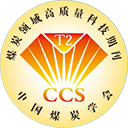Abstract:
Low-temperature catalytic CO oxidation using nanomaterials has achieved significant progress in recent years as an essential air pollution control technology. Addressing the technical challenges of rapid CO removal in coal mines, this study reviews the current research on noble and non-noble metal catalysts, revealing the effects of surface defects and metal-support synergy on reaction pathways. The study highlights the active mechanisms of different catalyst systems in low-temperature CO oxidation, discusses the regulatory role of supports on catalyst performance, and evaluates the promoting effects of additives. By comparing the performance of noble and non-noble metal catalysts, this study summarizes their advantages and limitations and proposes new directions for future catalyst design. It provides a theoretical reference for the development of low-temperature CO oxidation catalyst.



 下载:
下载: